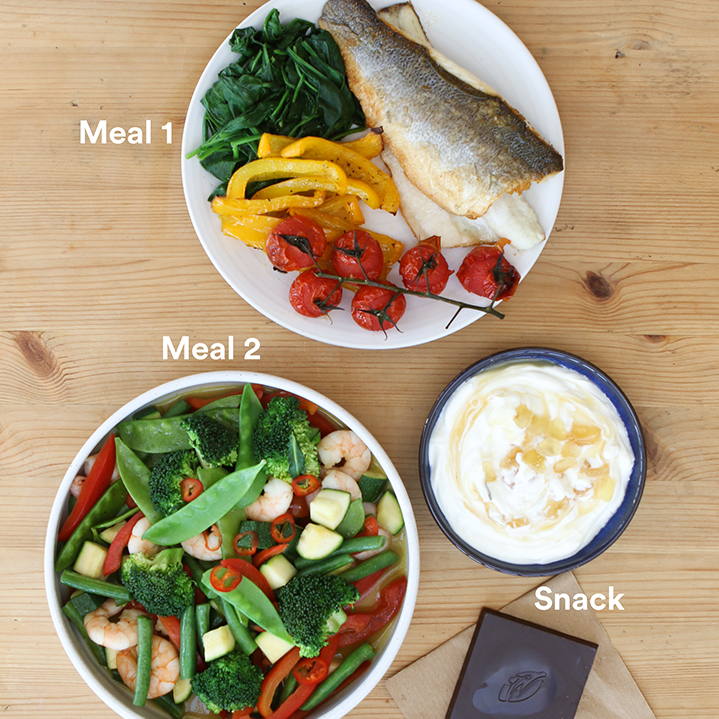The Concept of Eating Two Meals a Day for Shedding Pounds
The idea of consuming only two meals a day has gained significant traction in recent years as a promising strategy for weight loss. Often referred to as “2 meals a day weight loss,” this approach involves restricting daily meals to two sittings while maintaining a balanced and nutrient-rich diet. The growing popularity of this method can be attributed to its potential benefits, such as increased fat burning, improved metabolic efficiency, and reduced overall caloric intake.
How to Successfully Implement a 2 Meals a Day Weight Loss Plan
Transitioning to a 2 meals a day weight loss plan requires careful planning and consideration. By following a systematic approach, you can effectively adapt to this new eating pattern and maximize its benefits. Here is a step-by-step guide to help you implement a 2 meals a day weight loss plan:
- Assess your current eating habits: Begin by evaluating your current meal frequency and daily caloric intake. This self-assessment will provide a baseline for planning your 2 meals a day weight loss journey.
- Plan your meal timings: Determine the ideal timing for your two meals. Many people find it beneficial to have breakfast and lunch, skipping dinner. However, you can adjust the timings based on your personal preferences and schedule.
- Control portion sizes: To avoid overeating during your two meals, practice portion control. Use smaller plates and bowls to help manage your food intake and prevent feelings of excessive fullness.
- Choose nutrient-dense foods: Ensure that your two meals are packed with essential nutrients. Opt for whole, unprocessed foods, such as fruits, vegetables, lean proteins, and whole grains, to meet your daily nutritional requirements.
- Stay hydrated: Drinking plenty of water throughout the day can help control hunger and maintain proper hydration levels. Aim for at least 8 cups (64 ounces) of water daily.
- Monitor your progress: Regularly track your weight loss and adjust your 2 meals a day plan accordingly. This continuous self-assessment will help you identify areas for improvement and maintain your motivation.
The Science Behind Eating Two Meals a Day for Weight Loss
The 2 meals a day weight loss plan has gained traction due to its scientific underpinnings. This approach leverages the body’s natural metabolic and hormonal responses to fasting and caloric restriction, leading to weight loss and other health benefits. Here’s a closer look at the science behind the 2 meals a day weight loss plan:
- Metabolism: Fasting for extended periods, as in the 2 meals a day weight loss plan, can increase metabolic efficiency. This is because the body adapts to the reduced meal frequency by burning stored fat for energy during fasting periods, leading to weight loss.
- Hormonal responses: A 2 meals a day weight loss plan can positively influence hormonal responses related to weight management. For instance, human growth hormone (HGH) levels increase during fasting, promoting fat burning and muscle growth. Additionally, insulin sensitivity improves, reducing the risk of insulin resistance and related health issues.
- Caloric restriction: By consuming only two meals a day, individuals naturally reduce their overall caloric intake. This caloric deficit, combined with the body’s metabolic and hormonal adaptations, creates an optimal environment for weight loss.
Potential Drawbacks and Challenges of a 2 Meals a Day Weight Loss Regimen
Adopting a 2 meals a day weight loss plan can present several challenges, making it essential to address these potential drawbacks before diving in. Here are some of the most common issues associated with the 2 meals a day weight loss approach:
- Hunger management: Restricting meals to two a day can lead to increased hunger, especially during the initial stages. Implementing strategies such as consuming high-fiber and high-protein foods, staying hydrated, and incorporating healthy snacks between meals can help manage hunger.
- Social implications: A 2 meals a day weight loss plan may interfere with social events and gatherings that typically revolve around food. To navigate these situations, consider discussing your weight loss goals with friends and family, planning ahead, and being flexible with your meal schedule.
- Nutrient deficiencies: By limiting meal frequency, there is a risk of not meeting daily nutritional requirements. To avoid this, ensure that your two meals are well-balanced and packed with essential nutrients, and consider taking a multivitamin supplement if necessary.
Real-Life Success Stories: Inspiring Accounts of Weight Loss through 2 Meals a Day
Discover the inspiring stories of individuals who have achieved significant weight loss by embracing the 2 meals a day weight loss plan. These success stories demonstrate the potential of this approach and offer valuable insights into the experiences, challenges, and achievements of those who have adopted this lifestyle change.
Story 1: Overcoming Emotional Eating
Meet Sarah, a 35-year-old woman who struggled with emotional eating and weight gain for years. By transitioning to a 2 meals a day weight loss plan, Sarah managed to lose 40 pounds in six months. She found that consuming only two meals a day helped her better manage her hunger and cravings, ultimately leading to a healthier relationship with food.
Story 2: Regaining Control After a Major Life Change
After the birth of his second child, John, a 40-year-old father, found it challenging to balance work, family, and personal health. By adopting a 2 meals a day weight loss plan, John was able to regain control of his diet and shed 30 pounds in three months. He emphasizes the importance of meal planning and preparation to ensure that his two meals a day are nutrient-dense and satisfying.
Story 3: Breaking Free from Dieting Plateaus
Lisa, a 50-year-old fitness enthusiast, had reached a plateau in her weight loss journey despite following various dieting plans. By switching to a 2 meals a day weight loss plan, she managed to break through the plateau and lose an additional 15 pounds. Lisa’s experience highlights the potential of the 2 meals a day weight loss plan to revitalize stalled weight loss efforts.
Expert Opinions and Recommendations on 2 Meals a Day for Weight Loss
To better understand the safety, sustainability, and efficacy of a 2 meals a day weight loss plan, it is essential to consider the insights and recommendations of nutritionists, dietitians, and health professionals. Here are some expert opinions on the 2 meals a day weight loss approach:
- Registered Dietitian, Jane Smith: According to Jane, a 2 meals a day weight loss plan can be an effective strategy for weight loss, but it is crucial to ensure that the two meals are well-balanced and nutrient-dense. She emphasizes the importance of incorporating a variety of fruits, vegetables, lean proteins, and whole grains to meet daily nutritional requirements.
- Nutritionist, Alex Johnson: Alex highlights the potential benefits of a 2 meals a day weight loss plan for individuals with busy schedules, as it can simplify meal planning and preparation. However, he cautions that this approach may not be suitable for everyone, particularly those with specific dietary needs or medical conditions.
- Health Coach, Olivia Brown: Olivia stresses the importance of mindful eating and portion control when following a 2 meals a day weight loss plan. She encourages individuals to listen to their bodies and avoid overeating, even during the two allowed meals.
Comparing 2 Meals a Day with Other Intermittent Fasting Methods for Weight Loss
The 2 meals a day weight loss plan is just one of many intermittent fasting methods available for weight loss. To help you determine if this approach is right for you, let’s compare it with other popular intermittent fasting techniques, such as 16:8, 5:2, and alternate-day fasting:
- 16:8 Method: This approach involves fasting for 16 hours and eating during an 8-hour window. For example, you might finish dinner by 8 PM and not eat again until noon the next day. The 16:8 method is often considered more sustainable for long-term adherence due to its flexibility and fewer restrictions on meal frequency.
- 5:2 Method: The 5:2 method involves eating normally for five days of the week and restricting caloric intake to 500-600 calories on the other two non-consecutive days. This approach may be more suitable for individuals who prefer having more flexibility in their meal choices and timing throughout the week.
- Alternate-Day Fasting: Alternate-day fasting involves alternating between days of normal eating and days of significant caloric restriction, typically consuming around 500 calories on fasting days. This method may be more challenging for some individuals due to its strict caloric restrictions and frequent fasting days.
When comparing these intermittent fasting methods, it is essential to consider factors such as personal preference, lifestyle, and dietary needs. The 2 meals a day weight loss plan may be an effective option for those seeking a more structured approach to meal timing and caloric restriction, but it may not be suitable for everyone. Always consult with a healthcare professional or registered dietitian before starting any new weight loss plan.
Maintaining Long-Term Weight Loss with 2 Meals a Day: Tips and Strategies
Transitioning to a 2 meals a day weight loss plan can lead to significant weight loss, but maintaining that weight loss over time requires dedication, consistency, and a focus on long-term lifestyle modifications. Here are some practical tips and strategies for maintaining long-term weight loss with a 2 meals a day plan:
- Incorporate regular exercise: Combining a 2 meals a day weight loss plan with regular physical activity can help boost weight loss and improve overall health. Aim for at least 150 minutes of moderate-intensity aerobic activity or 75 minutes of vigorous-intensity aerobic activity each week, along with muscle-strengthening activities on two or more days a week.
- Practice mindful eating: Developing mindful eating habits can help you become more aware of your hunger and satiety cues, preventing overeating and promoting long-term weight loss success. Focus on eating slowly, savoring your food, and listening to your body’s signals.
- Monitor your progress: Regularly tracking your weight loss progress can help you stay motivated and identify areas for improvement. Consider using a food diary, a fitness tracker, or a smart scale to monitor your weight, food intake, and physical activity levels.
- Stay hydrated: Drinking plenty of water throughout the day can help control hunger, support weight loss, and maintain overall health. Aim for at least 8 cups (64 ounces) of water daily.
- Plan for social situations: Adhering to a 2 meals a day weight loss plan may be challenging in social situations. Plan ahead by discussing your weight loss goals with friends and family, bringing your own healthy meal options, or allowing yourself some flexibility on special occasions.
- Consistently reassess your plan: Regularly evaluating your 2 meals a day weight loss plan can help you identify areas for improvement and ensure that your plan continues to meet your changing needs and goals. Make adjustments as needed to maintain long-term weight loss success.








